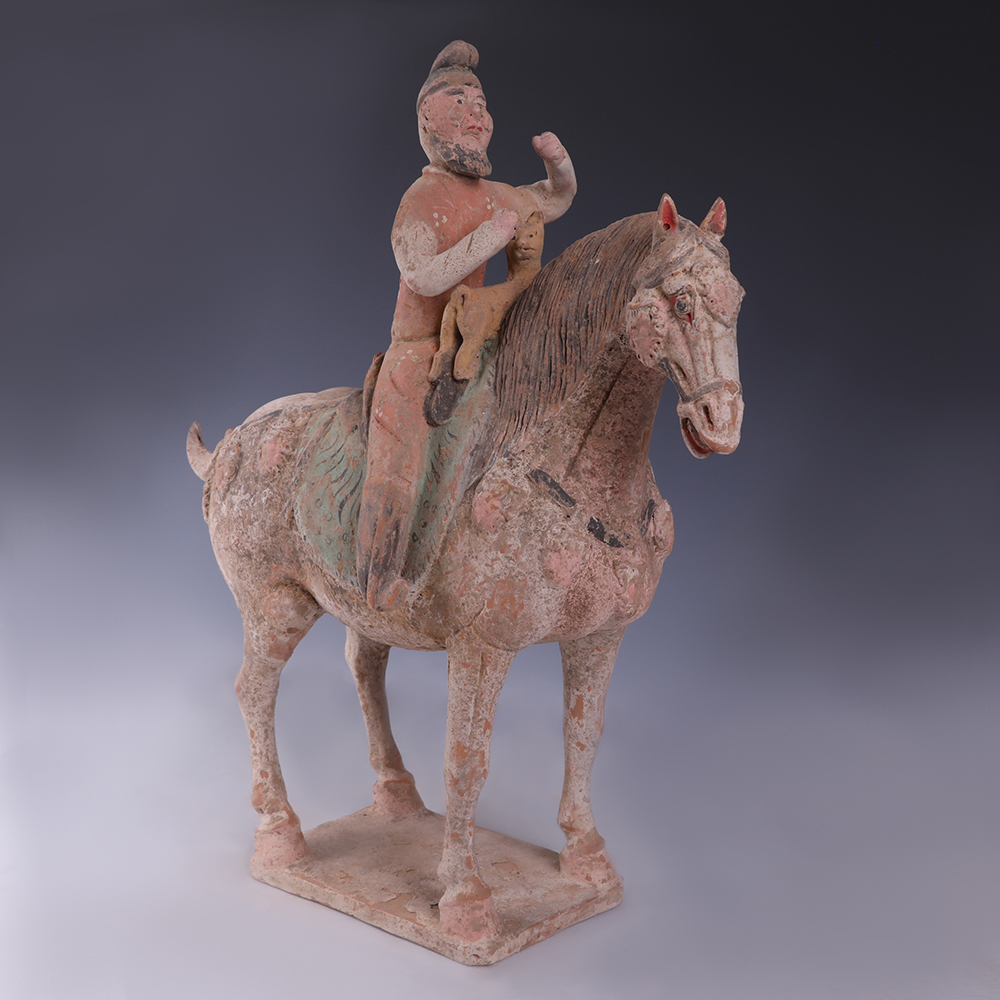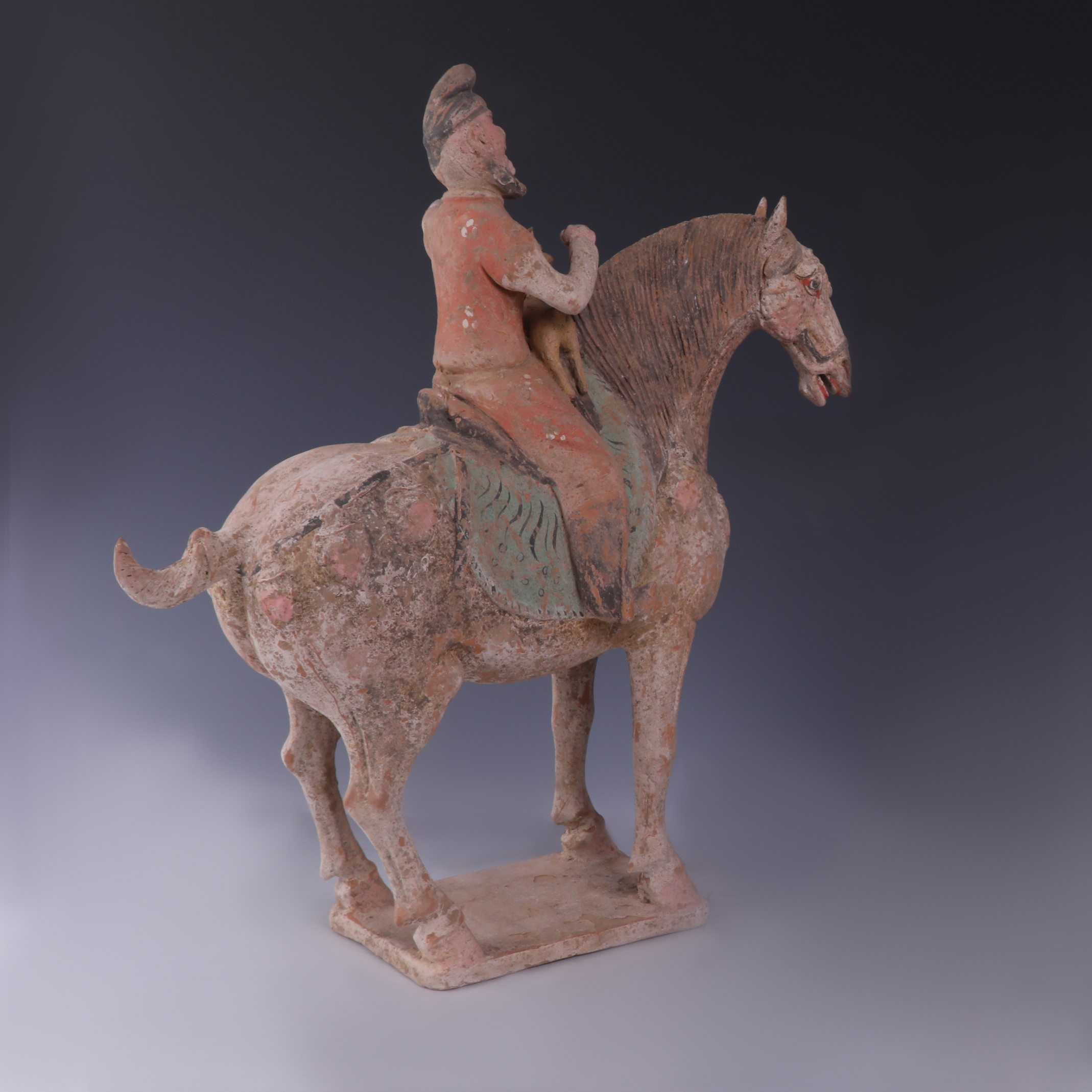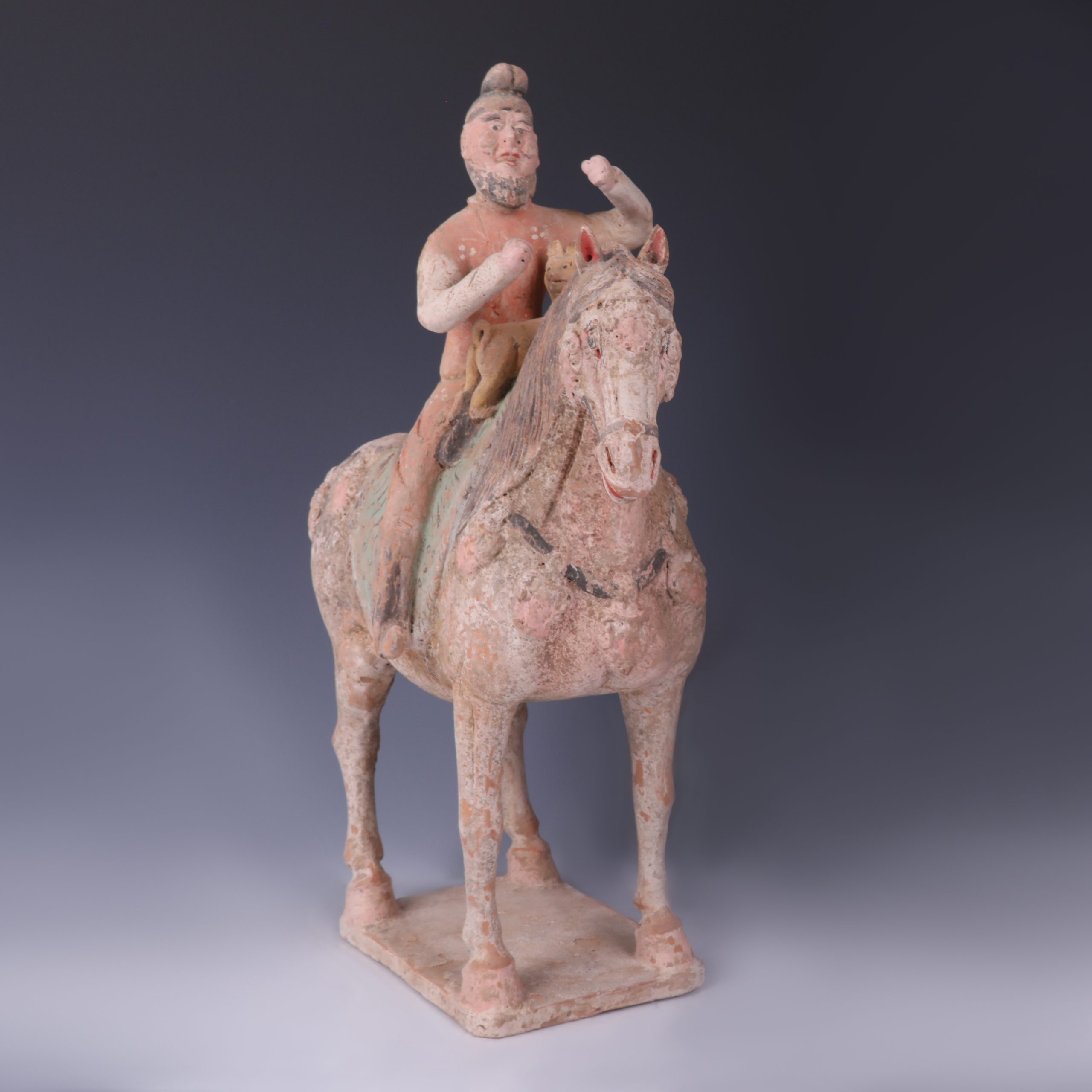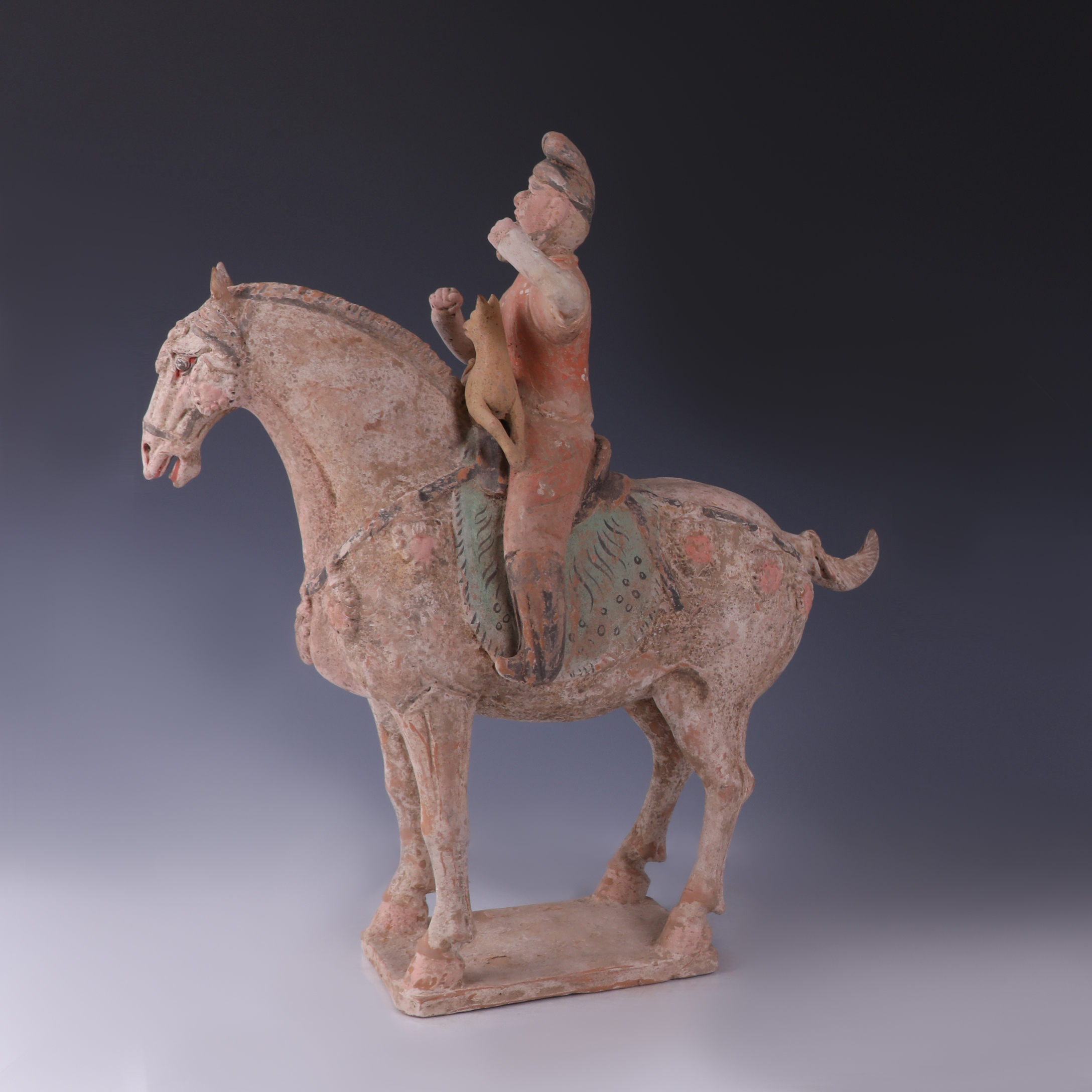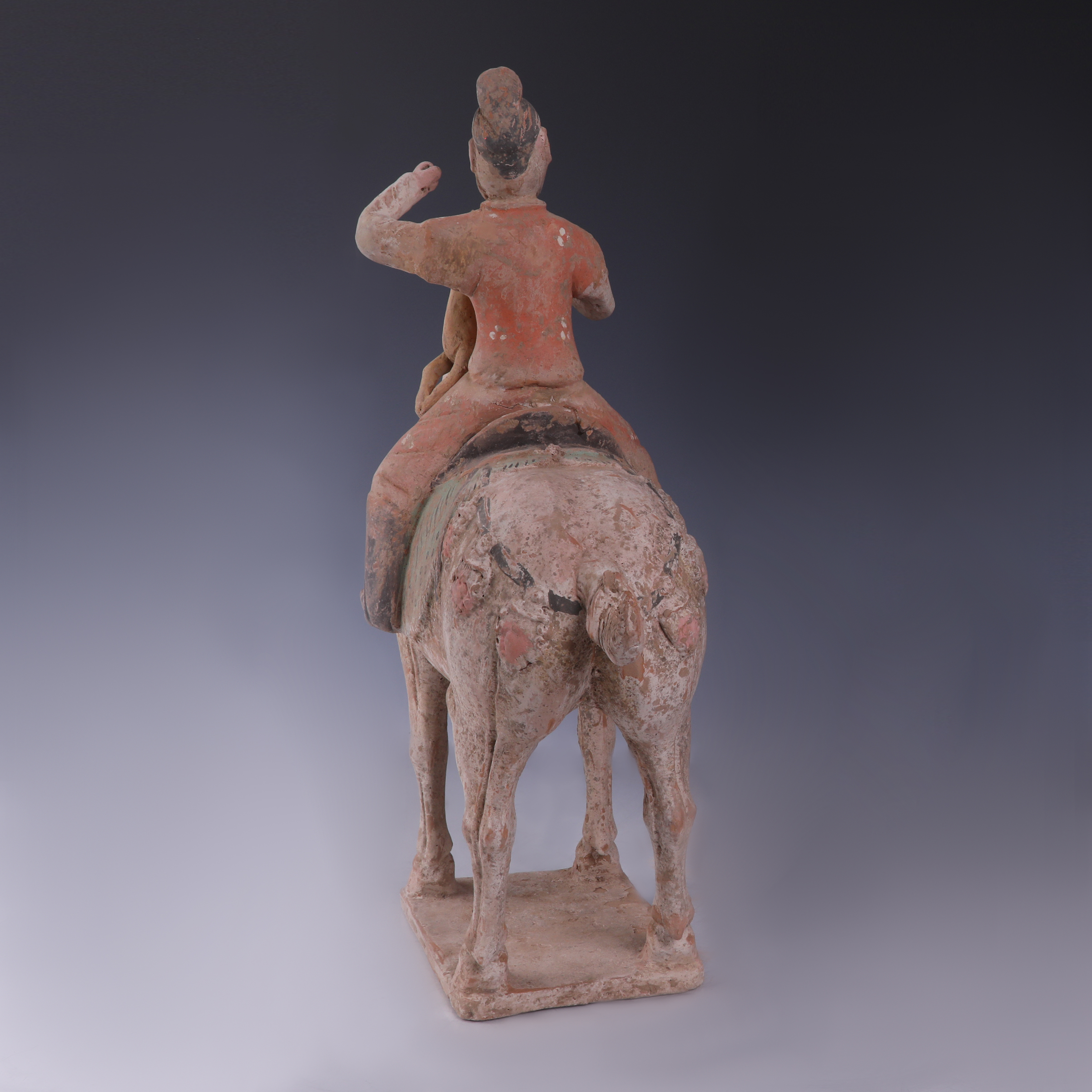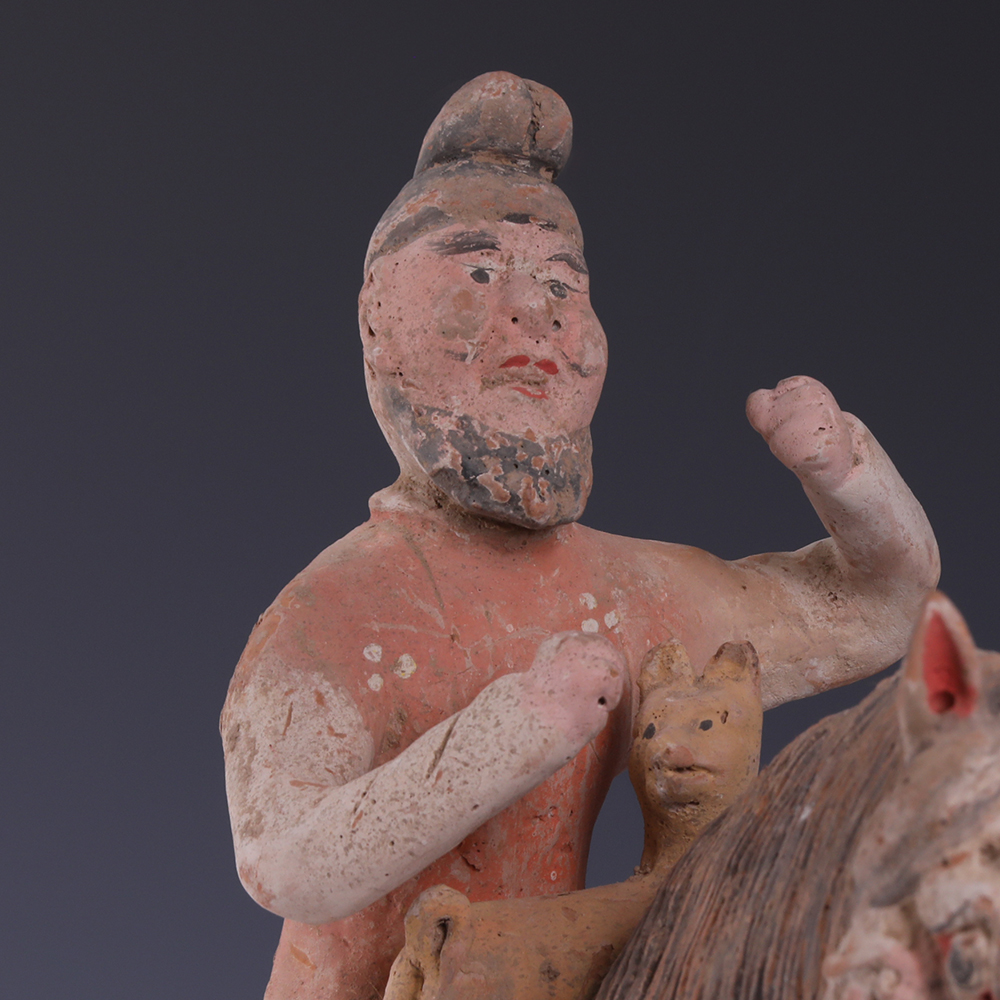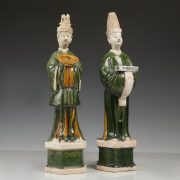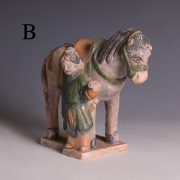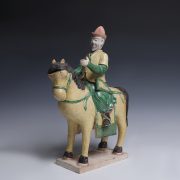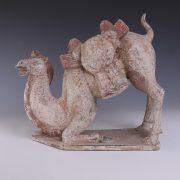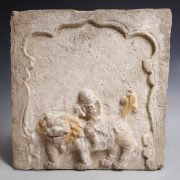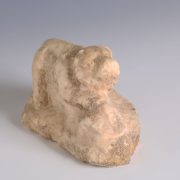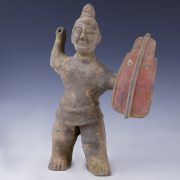Horses were important during the Tang Dynasty and were both the reward of successful military expeditions and the foundation of imperial stability. Brought to China by means of the international Silk Road trade network, horses were also a sign of wealth, with strict laws in place limiting the use of horses to people of a certain rank, and even those serving in the military had to provide their own mount.
The terracotta horses presented here are an incredibly fine example of grave goods placed in tombs, found in the burials of the Tang Dynsaty. They are often placed with a. vareity of figurines and are believed that they would assist the deceased in the afterlife. Figures of this type are called mingqi (冥器) in Chinese, and depict servants, officials, soldiers, musicians, court attendants, dancers and, in the case of animals, horses and Bactrian camels and would represent the high social class that the burial occupants occupied during their lives.
Since ancient times, “Lari festival” was celebrated on the last day of the La month. The ancient Chinese people presented animals as offerings to the Gods and ancestors, praying for good harvest for the next year. As a result, during the Tang Dynasty, it was custom to hunt on this day, not only to meet the demand for sacrifice, but also to reavel the hunting spirit within them, as part of the celebration. The character “La” has been recorded and interpreted in ancient archives as “when the old meets new,” that is why people need to make their “year-end report” to gods and forefathers, although most of the festivities are surrounded with worship. The Lari festival has since changed to include holding banquets for famaily and the community and many of the traditions have survived to the present day.
For more information on Tang Statuettes, please see our relevant blog post: Terracotta Tomb Attendants and The Horse in Chinese Culture and Art
